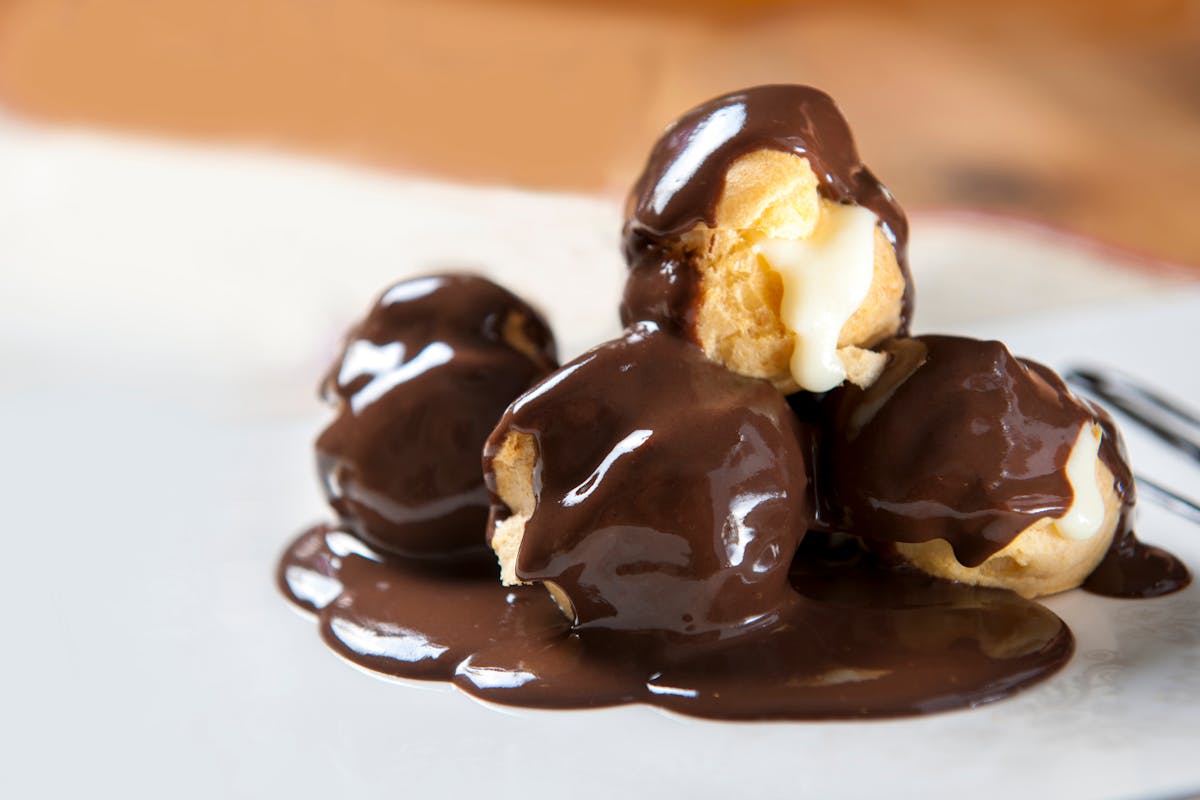The History Of Profiteroles

Profiteroles, commonly known as cream puffs, are a delightful choux pastry that are both rich in flavor, yet light in texture. Choux pastry is incredibly versatile and relatively simple to make, but profiteroles deserve to be considered to be in a category all their own. Not only are they filled with a sweet, flavorful cream, but they are also typically topped with warm caramel, or sometimes even chocolate or other sweet sauces. Whether profiteroles are one of your favorite treats or you’ve never even heard of them, there’s an interesting history behind these pastries that will leave you looking to satisfy your profiterole cravings.
Profiteroles Date Back to at Least the 16th Century
While profiteroles likely existed beforehand, they first made an appearance in recorded history in Francois Rabelais’ book Gargantua, penned in the 1500s. And while profiteroles are now considered to be a classic French pastry, they actually had their origins in Italy. When Catherine de Medici, of Italy, married King Henry II, of France, the Queen made sure to bring her chefs with her. While the texture was a bit different from what we’re familiar with now, Catherine’s chefs prepared their version of profiteroles for the royals and their court, and thus, the pastry was introduced in French culture, which they would later go on to perfect.
The Evolution to the Croquembouche
For centuries, profiteroles weren’t exactly prepared the way we’re familiar with today. For that, we can thank Chef Antonin Carême, who was–and still is–highly regarded as one of the most influential French chefs in history. Among many other contributions to French cuisine, Carême popularized profiteroles in the 19th century by adding a cream filling and warm caramel topping. But he didn’t just stop there. He took the pastry one step further by towering them atop one another into what would become the croquembouche. The croquembouche has stood the test of time, as a popular wedding dessert both at the time of its creation and today.
Profiteroles are Surprisingly Simple to Make
Profiteroles don’t require any fancy ingredients or tools to make. In fact, it only takes a few pantry staples to make a choux pastry, the foundation to your profiterole. Flour, sugar, salt, water, butter and eggs are all you need to get started, along with a pan, mixer and oven.
Enjoying a Profiterole at Rochambeau in Back Bay, Boston
The good news is, if you’re better at eating pastries than baking them, you can still get your profiterole fix without doing any of the work! Rochambeau has the freshest profiteroles around, and the variety to satisfy every pastry craving. Give us a call today at (617) 247-0400. Be sure to visit us for the opportunity to hand-select one (or several!) of our profiteroles. Whether or not you choose to share is up to you!
